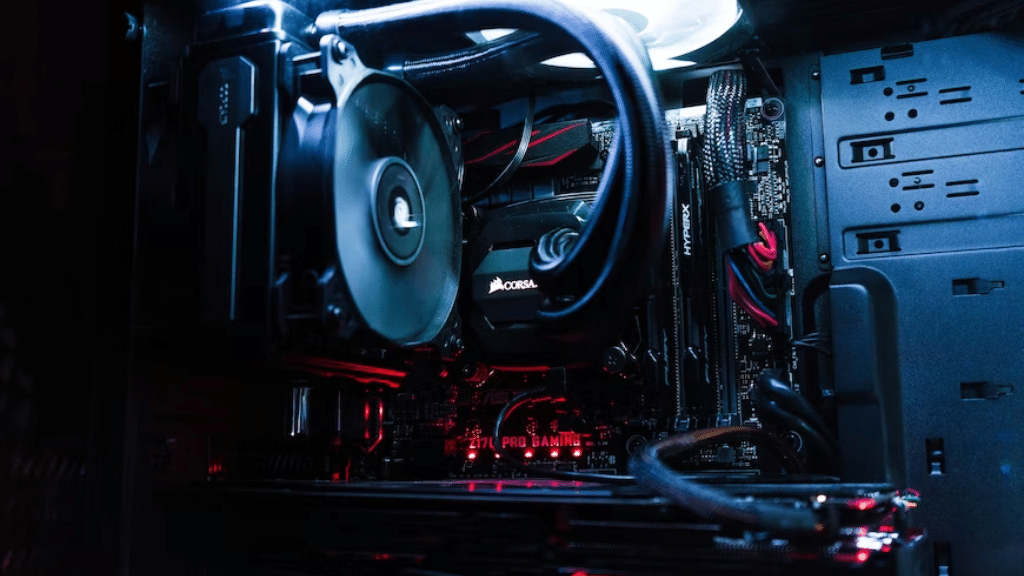
You must boost fan speed to allow your CPU to cool down if your system is overheating. You need to be able to change the fan speed for a variety of reasons, not just overheating. You may need to use one of the techniques in this article to lower the speed of your fans if they are operating at full speed for no apparent reason.
One of the best ways to adjust CPU fan speed is through the BIOS, however occasionally the BIOS does not enable you to do so. You have two options for controlling your fans without BIOS if you are experiencing a similar problem.
1.) Fan control software.
2.) A fan controller outside.
1.Fan control software
Numerous fan control programmes exist, including Corsair Link, NoteBook FanControl, HW Monitor, Argus Monitor, SpeedFan, etc. All of them are beneficial, but in this article we’ll show you how to set up SpeedFan to regulate fan speed.
what is SpeedFan.
Free program for Microsoft Windows called Speed Fan can track CPU component temperatures and fan speeds. You can utilize its automated fan speed feature, which reads the temperature of the components and adjusts the speed accordingly, or you can manually manage the fan speed.
One of the most widely used fan control programmes is called SpeedFan; although its design may seem dated to you, it was created for free by an individual. Beginners may find it challenging to set up the software, so we urge you to carefully follow the instructions below:
Download and set up SpeedFan.
Download the SpeedFan installer from this page. Install it after it has been downloaded, then launch it. The application will scan every bus on your motherboard after it has been opened.
Configure Fan Control
Don’t use the PWM controls to adjust the fan speed right away after starting the software because you need to configure it first.
● When you select “Configure,” a new window will appear.
● Click “Advanced” now.
● To select “Chip,” you must first select “Advanced” from the drop-down menu.
● Find your PWMs in the menu by clicking on all the chip dropdown choices if you are unsure about their location.
● Choose the PWMs you want to regulate after you’ve located them.
● After choosing the PMW, a “Set to” option will appear from which you must choose “Manual” or “Software-controlled.” (By doing this, Speedfan will have control over your fans.) To save the settings, be sure to click the “Remember it” button.
● When you return to the main window, PWM1, PWM2, PWM3, PWM4, and PWM5 will be visible. You can now manually type or use toggle buttons to modify the fan speed after selecting the PWM that you selected.
Set up automated fan control
We described how to manually control fan speed in step 2 of the process. Additionally, you can set up automatic fan management so that when your CPU starts to overheat, Speedfan will automatically increase the speed and decrease it.
By selecting “Configure,” “Fan control,” and then “Advanced Fan Control,” you may configure automated fan control.Because it’s a little complicated and we don’t think it would make sense to explain everything here, we’ve included a YouTube video below. You can correctly set up everything with its assistance.
2.) A fan controller external
Protective measures like thermal paste and cooling systems are beneficial, but you may also use an external fan controller to make the most of your fans. You can utilise an external fan controller, such as the Thermaltake Commander F6 or CORSAIR COMMANDER PRO, as some motherboards do not support Speedfan.
Commander F6 Thermaltake
Although Commander F6 is not the most attractive external fan controller, it is quite common. It can simultaneously monitor six fans and includes a three-pin socket. The gadget contains six control knobs, a warning buzzer with short circuit protection, an RGB LCD where temperature and fan speed can be seen, as well as six temperature sensors.
What prompts computer fans to spin faster?
Since video editing programs and demanding video games use a lot of the CPU, active cooling is necessary, thus computer fans start spinning at a high RPM.
Why does a PC fan make such a loud noise?
Typically, noisy computer fans are a result of unclean fans. Because dust can harm fan bearings and cause them to become noisy, it’s preferable to use compressed air cans, an electronic vacuum, or a moist cloth to clean your computer fans. You can refer to Computer Hope’s How to Clean a Computer System fan guide.
Why do PC fans run continuously?
If the CPU fans are constantly operating at full speed, the heat sink or temperature sensor may be to blame. Although there may be problems with the processor as well, a defective temperature sensor is the most frequent source of this problem.
Sources
How to respond when the CPU fan is running at full speed always, Window’s Club
Related Articles:
How To Create a Virtual USB Drive in Windows
How to Clean Up Windows Installer Folder for Improved Performance.
What is Emulated Storage. How to Access /storage/emulated/0 ?
